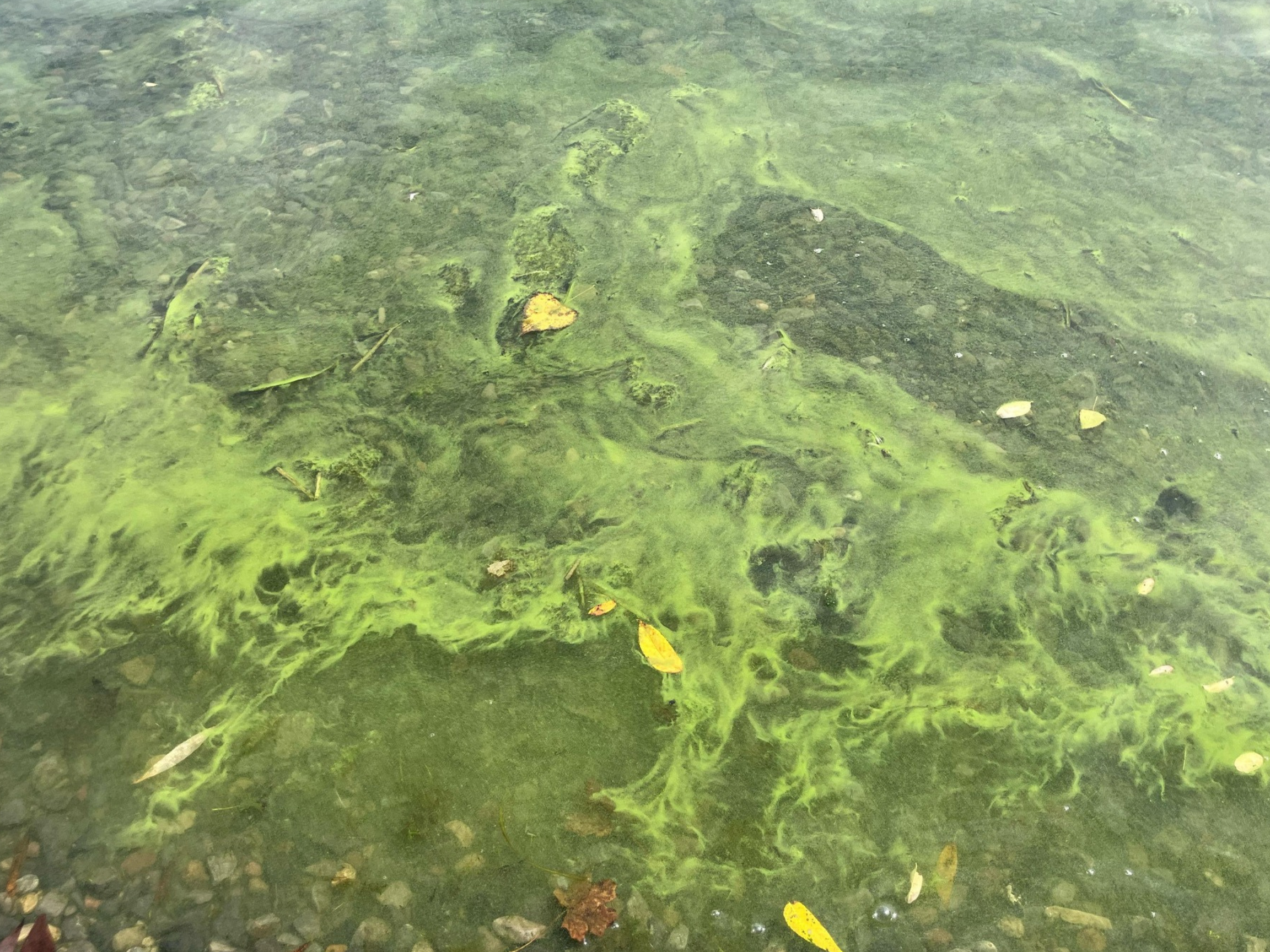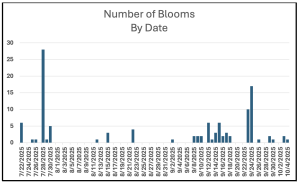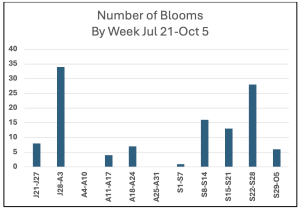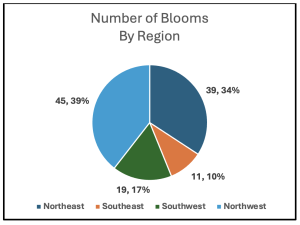CONTACT US
News
Home » Early Insights from the 2025 HABs Season

GENEVA, N.Y. – The Cyanobacteria Harmful Algal Bloom (HAB) season is not necessarily over, but the worst is most probably behind us. The good news is that it was not as intense as last year. The bad news is that HABs are still with us. HABs continued to occur across the Finger Lakes this year and Seneca Lake is fairly typical.
Counting Blooms. Pure Waters (along with DEC) counts blooms one day at a time. If there are multiple reports in a zone during a single day, only one is confirmed and the others are labeled as duplicates. There are about 80 zones with assigned monitors around the lake monitored by almost 100 volunteers.
Results. As of October 5th, we have had 114 confirmed bloom reports this summer. This is similar to 2019, which was the highest number of confirmed bloom reports before last year (130). Last year we saw 336 confirmed bloom reports and many days of blooms in a row.
The 114 total can be somewhat misleading. Almost half of the reports were on three dates: July 28 (28), September 23 (10), and September 24 (17). Last year, August was a big month for blooms. This year we only had 4 days with at least one bloom between July 31 and September 7 (nine total confirmed blooms). We are never sure why these things happen, but it could be that the winds were high during August this year and they seemed much quieter last year. That said, no one can predict with certainty when a bloom will occur, or where.
In total there were 37 days with at least one confirmed bloom report out of the 77 days from July 21 through October 5. However, only seven days had 5 or more confirmed bloom reports. One or two bloom reports a day on a lake the size of Seneca is not many.
The following three graphs will help visualize the season. The first graph is the number of confirmed blooms on a particular date. The second shows confirmed blooms grouped by week (Mon-Sun). The third is a breakout by region.



Looking ahead, we took a few HAB samples this year for analysis by the Finger Lakes Institute. They are being tested for the Chlorophyll A and toxin levels. Some of these samples are correlated with the Nearshore Nutrient project we have been running this summer. Once those analyses are complete, we will pass along the results. (The Nearshore project’s last samples are October 14).
To learn more about volunteering: https://senecalake.org/volunteer-opportunities/
To learn more about donating: https://senecalake.org/giving/
Seneca Lake Pure Waters Association is a 501(c)3 organization committed to preserving, protecting, and promoting the abundant resources of the largest Finger Lake. Seneca Lake is a source of drinking water, recreation, and economic opportunity for the greater community and its visitors. Our programs and partnerships make it possible to monitor water quality, educate the public, and evaluate threats to ensure the a healthy future for Seneca Lake and those who depend on it.